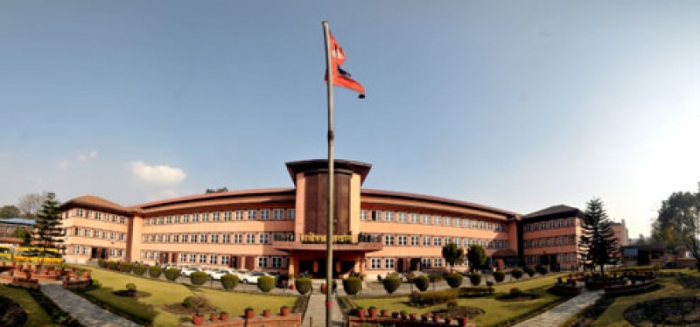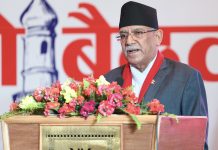Financial accessibility refers to the extent to which financial services are in reach with people. It is the availability of financial institutions to render different types of financial services to those who are in need or preferring to have in their reach.
It can also be said as availability of branches and networks to provide different financial services. These financial services could be in the form of deposit collection, credit facilities, government transactions, card services, digital banking, insurance and other auxiliary services. In precise, financial accessibility is the reach of people to financial institutions, their networks and services from different locations so as you meet their financial need or objectives.
Financial accessibility is the way through which people access different varieties of financial services. Such way could be either through offline or online platforms. It is the dispersion of financial services to all irrespective of topography, ethnicity, financial status, gender, literacy and physical capability.
Financial accessibility not just make people adaptive to use financial service but improve overall banking and financial planning habit of people. Its horizon is not restricted to accessing financial service domestically in a country. But it is also accessing different financial channels for such services in global context.
Current Scenario of Nepal
The subject of financial accessibility entered in Nepal with the establishment of Nepal Bank Limited on Kartik 30, 1994. Then it was limited in the boundary of establishing more banks and financial institutions with direct government initiation and intervention. Later, the goal of ensuring financial accessibility was facilitated and favored by opening banking sector for private ventures and adoption of economic liberalization policy. Actually, the train of financial accessibility was taken foreword by the engine of economic liberalization.
With economic liberalization, so as to ensure financial services are available to grass root level of the society, the numbers and networks of banks and financial institutions were highly expanded. This notion of financial accessibility was more firmed by financial sector reform programs which made management of financial institutions sound, expansion of financial services sustained and development of financial sector in stable manner.
Nepal has gone through major political changes. Yet, there was no reluctancy in preference of these systems to make financial services available and accessible to all. This was the scenario in late Rana Regime, Panchayat System and Democracy Restoration of 2046. The same has continued even with the instutionalization of Federal System in Nepal.
In fact, the relevancy of financial accessibility has more significance than ever after the beginning of federal era in Nepal. Financial resource mobilization for development and social sercurity programs by different federal bodies demands for greater financial accessibility throughout the country. With government reaching doors of public, there is more profound need of financial system for greater and convenient public service. It is required for more sound economic and business activities at federal levels. Thus, in such perspective, the current scenario of financial accessibility in context of Federal Nepal can be presented in tables below:
Table 1 : Provincial Status of Financial Accessibility
| S.No. | Province | Districts | Local Bodiees | Local Bodies With Commercial Bank Branches | % Covered By Commercial Bank Branches | Local B ody Not Accessed With Commercial Bank Branch |
| 1 | Province 1 | 14 | 137 | 137 | 100 | |
| 2 | Province 2 | 08 | 136 | 136 | 100 | |
| 3 | Bagmati | 13 | 119 | 118 | 99.16 | Ruby Valley, Dhading |
| 4 | Gandaki | 11 | 85 | 85 | 100 | |
| 5 | Lumbini | 12 | 109 | 109 | 100 | |
| 6 | Karnali | 10 | 79 | 78 | 98.73 | Junichade, Jajarkot |
| 7 | Suder Paschin | 09 | 88 | 87 | 98.86 | Saipal, Bajhang |
| Total | 77 | 753 | 750 | 99.60 | ||
(Source: Current Macroeconomic and Financial Situation of Nepal, Mid-September 2021/22)
Table 2: Nepalese BFIs and Their Branch Status
| S.No. | BFI | Numbers | Branches | % of Total Branches | Brances Per BFI | Branches Per Province |
| 1 | Commercial Banks | 27 | 4775 | 43.88 | 176.85 | 682.14 |
| 2 | Development Banks | 18 | 1029 | 9.46 | 57.17 | 147.00 |
| 3 | Finance Companies | 17 | 237 | 2.18 | 13.94 | 33.86 |
| 4 | Microfinances | 69 | 4841 | 44.55 | 70.16 | 691.57 |
| 5 | Infrastructure Development Bnak | 1 | – | – | – | – |
| Total | 132 | 10882 | 100 | – | 1554.57 | |
(Source: Current Macroeconomic and Financial Situation of Nepal, Mid-September 2021/22)
From the above statistics, it is evident that financial accessibility has been wide spreaded throughout the country. The presence of commercial banks and other BFIs in urban to rural locations evidently shows appreciable position in terms of financial services being offered easily in doors of local bodies. The status of presence of commercial bank branches in 750 local bodies with a total BFIs branch network of 10882 branches is a commendable position concerning the financial accessibility status of Nepal. Such federal coverage by banks and financial institutions from metro cities to rural lone villages have effectively carried and provided all forms of banking services to those having accessibility to it.
Another dimension to financial accessibility in context of federal Nepal is the need of financial sector services to implement and institutionalize the essence of federalism itself. Budget releases to provincial and local levels, find for development projects, social welfare schemes, tax and non-tax revenue collection at all levels etc. have to be carried through banking and financial channels.
Government and Nepal Rastra Bank’s policy bagged by different monetary and non-monetary incentives for rural sector financialization have made it easy and cost burdenless for BFIs to extend their branch network. The mandatory branch opening policy adopted by NRB have not just limited BFIs to profit centers (cities) to service centers (villages). All these, have positively fostered on extensive branch networks and availability of services in all territories of the country. Thus, financial accessibility in terms of banks and financial institutions, their branches and services rendered by them have tremendously risen in recent federal era of Nepal.
The Squeezed Reality
It is a sweet truth that financial institutions have reached every rural corners along with urban centers. But the density of such accessibility is very high in urban areas than in rural areas. We can easily find BFI branches in every streets and toles in urban cities. The distance between these branches is very little. But the picture is different in case of rural areas.
The distance between branches is very high. Even people have walk for hours or days in tough hilly and mountaineous regions of Nepal. To reduce such distance and making financial services accessible is a challenge in such tough topographic locations. The situation is even worse in places having higher altitude, no road or air transport, low internet and telecommunication service availability and reluctancy to use financial system due low financial literacy or preference.
Another sour reality of Nepalese financial accessibility is priority on institutional accessibility rather than financial service accessibility for all. It has to be understood that people with distinct ability also make an essential cluster who need financial sector services. But restrictive mobile banking and ATM card issuance policy has shielded their true financial accessibility.
This no way is fair or equal treatment of such distinct class of people in terms of different physical, mental, intellectual and social abilities. The situation is even more unfair for visually impaired customers or clients. Very little or almost no creation and construction of branch, ATM outlet and digital platforms for financial inclusion of such people is mostly neglected in actual financial service delivery mechanism to ensure financial accessibility for all.
With recent pandemic of COVID-19 have compelled banks and financial institutions to be feasible for being digitally accessible. It is not about direct presence of BFIs and their customers’ presence in a certain physical location. Now, it is all about BFIs being accessible anytime from anywhere. This best fits the prominent need of COVID era.
To create mechanism for long distance customer relationship management, day and night operating contact centers, business continuity framework etc. to address such new financial accessibility need is another challenge in perspective of Nepal. But the initiation, implementation and practice of such a way of being accessible by banks and financial institutions is going in direction of progress but relatively at low pace.
Conclusion
Financial accessibility means availability of financial institutions and their services in all parts and for all clusters of population of a country. It can also be regarded to as reaching to and availability of financial services for all at the time of need. It is vital for economic growth, national prosperity and social development of a country. It is an essential dimension of any type of economy i.e. Either advanced or emerging, and all kinds of political systems i.e. Either federal or non-federal. Thus, it is a crucial aspect in context of emerging economy and institutionalized federal nation like Nepal. The delegated development, public service and social welfare can only be attained if financial accessibility is in right status.
At present, financial accessibility is limited to branch and network expansion of BFIs and establishing financial institution in all topographic locations. This has resulted due to business potentials of these locations, regulatory requirements and as a part of corporate social responsibilities of BFIs. With this, foundation for better and inclusive financial accessibility for all throughout the country has been laid. What is required is more qualitative and rational location selection to avoid reach challenges of service deliverables.
Along with this, more policy and strategy driven financial accessibility programmes with co-ordination of local bodies, BFIs and regulatory bodies is required. The focus has to be shifted towards online and digital accessibility through digital literacy and technological orientations programmes. Only then financial accessibility can transform from the phenomenon of financial institution reach into rich financial service delivery system.
(Writer Ravi Dhungel, is working as Assistant Manager at Nepal Bank Limited Marketing and Research Division.)

















